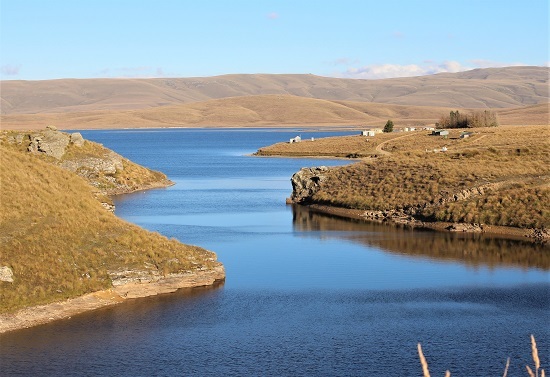Onslow project updates in May and December
Jill Herron
19 April 2022, 6:30 PM
 A drilling rig is ‘walked’ to a site near Lake Onslow last week to begin test work.
A drilling rig is ‘walked’ to a site near Lake Onslow last week to begin test work.The government has begun drilling work near Lake Onslow as part of its $30M investigation into a possible pumped-hydro power scheme.
The results of this, however, and the environmental cost involved in the build, will not be assessed until the end of the year. The NZ Battery Project idea aims to guarantee a ‘greener’ power supply year-round, even in very dry years, although there would be no guarantee of cheaper power prices.
While the funds are also being used to look at other types of energy generation elsewhere for now, Lake Onslow is by far the largest and will be New Zealand’s biggest hydro project ever, if it goes ahead.
Next month the government will review initial findings from scientific and other studies undertaken during past months. They would then refine where the focus should be for the second stage of the feasibility study, according to a Ministry for Business, Innovation and Employment(MBIE) spokesperson.
Meanwhile, Energy and Resources Minister Megan Woods’ announced yesterday that the first bore holes for the geotechnical investigations were underway. The site was blessed by representatives from mana whenua and the drilling company, Cromwell-based Speight Drilling, had undertaken a site induction and begun drilling, she said.
This first hole will be drilled to approximately 100 metres. Core samples will be taken and tested, and monitoring equipment will be installed to monitor things like groundwater flow over the long term.
Minister Woods said this geotechnical investigation, and those being proposed for the coming months, will provide “valuable insight into the regional geology and its suitability in supporting pumped hydro infrastructure”.
“This work will help determine the best tunnel route and location for an underground powerhouse, and ultimately, give a better picture of the scheme’s technical feasibility and costs.
These technical investigations will inform the broader Lake Onslow feasibility study that also considers the environmental, cultural and social implications,” Minister Woods said.
Information gained from the drilling would not, however, be assessed until December when the second phase of the feasibility study was presented to Ministers. Embodied carbon and operational carbon emissions for each design option of the pumped hydro scheme will also be assessed as part of final
feasibility decisions in December, MBIE say.

Lake Onslow is man-made and a popular fishing spot with anglers from across the region.
Next month, Ministers will receive information on those potential design options for the scheme, as well as updated cost estimates and information on potential impacts on environmental, cultural and other values.
“This information will be preliminary, and subject to further revision as part of further feasibility work through to December. In May detailed geotechnical information will not yet be available.
Ministers may decide to stop or pause work on a pumped hydro scheme at this stage, although detailed geotechnical information will help to provide a more accurate assessment of geotechnical risks, as well as overall project cost.”
Ministers would also be able to make a decision next month on whether any alternatives to the Lake Onslow option require further investigation as part of the feasibility study.
There are predictions of a four-year build with 3000 direct jobs and an economic boost to the area. Where the workers would live is unknown as Central Otago grapples with its long-term job-surplus and associated housing shortage.
Many locals were adopting a wait and see approach and the government was not -at this stage anyway - looking for general feedback regarding how people felt about the project.
“At this stage of the project we are engaging directly with those affected by the Lake Onslow investigations, including landowners, mana whenua and councils.
Engagement with the wider community will be considered as part of Phase 2 of the NZ Battery Project, should a pumped hydro scheme at Lake Onslow pass the feasibility stage,” MBIE say.
In 2020 Labour announced an extra $70M was being set aside to expediate its aim of making the country’s electricity generation 100 percent renewable by 2030, five years earlier than planned.



